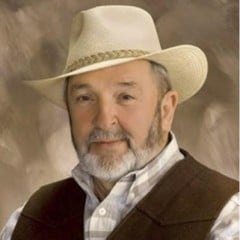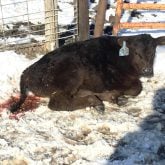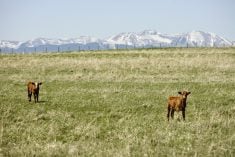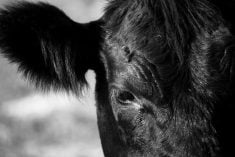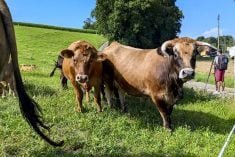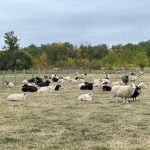Much is written about genetic mutations in beef calves: why it happens, pathological descriptions and how to manage the deformities. Pathologists love to describe structural abnormalities of organ systems and what else has been discovered. The literature on genetic mutations goes far beyond what can be covered in one column, so I will only address a few common conditions involving skeletal deformities that appear at calving.
Dr. Brian K. Whitlock, College of Veterinary Medicine, University of Tennessee and Dr. Elizabeth A. Coffman, College of Veterinary Medicine, Ohio State University, divide congenital defects in cattle into heritable, toxic, nutritional and infectious categories. Heritable congenital defects are recognized more frequently and are most likely propagated because of specific but unrelated trait selection. In some cattle, the occurrence of inherited defects has become a frequent and economically important source of pregnancy loss. Veterinarians, animal scientists and cattle breeders should be aware of heritable defects and be prepared to investigate and report animals exhibiting abnormal phenotypes (physical appearance).
As producers select genetics from fewer individuals, the potential for heritable defects increases. It’s important to surveil for such disorders, as part of bovine health programs.
People often discount fetal abnormalities as randomly occurring “accidents of gestation.” Failing to identify heritable defects may allow further distribution of the mutated genetics. Obvious defects such as skeletal malformations, extensive soft tissue abnormalities, severe neurological disorders and skin diseases are more likely to be recognized, whereas defects involving internal organs or abortions and stillbirths may be less obvious and more easily missed.
Read Also
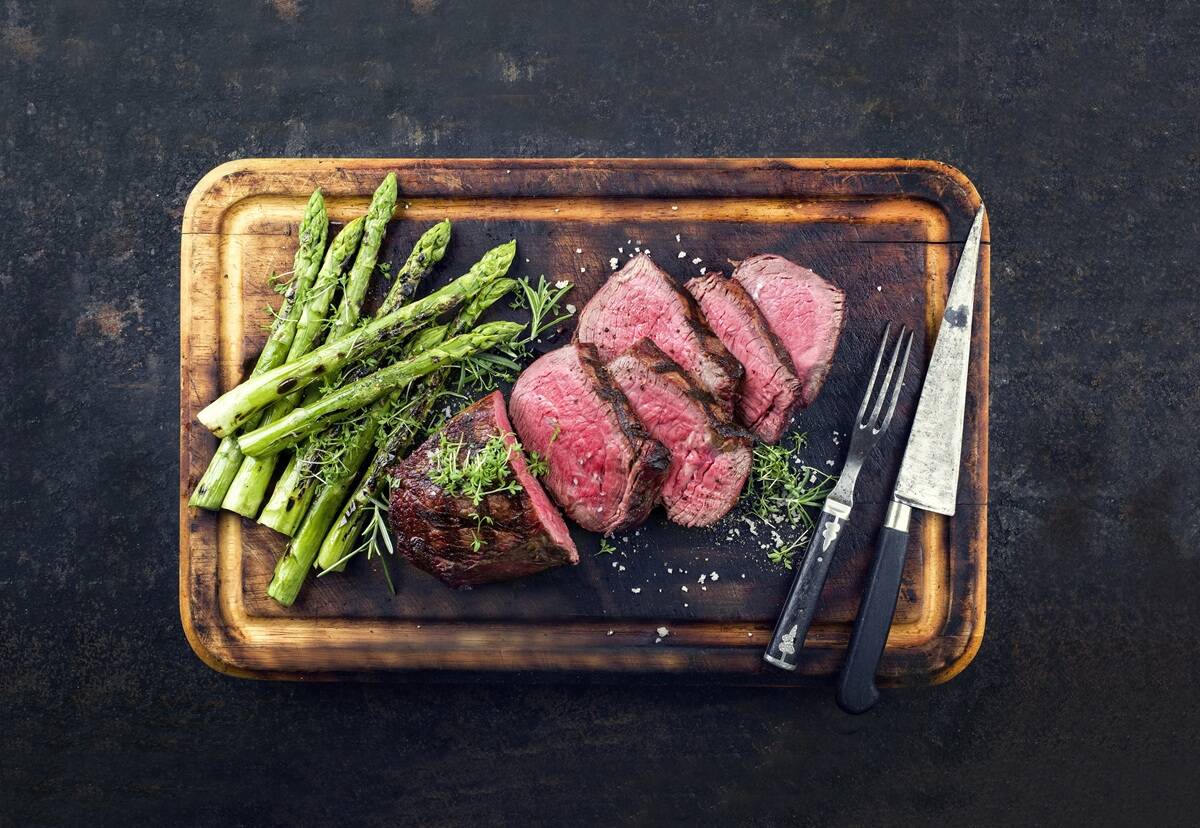
Building demand together: The impact of Canada’s beef import levy
The beef import levy has become a central tool for ensuring balance in Canada’s beef industry
Surveillance may be further compromised by the reluctance to report potentially heritable disorders, or the reluctance of breed associations to aggressively pursue potentially heritable disorders.
There are several congenital deformities seen in beef calves, including everything from alopecia to congenital spinal stenosis. Two skeletal deformities in calves that are commonly described are arthrogryposis multiplex (curly calf syndrome) and dwarfism.
Arthrogryposis multiplex
Arthrogryposis multiplex is a lethal genetic defect recognized in Charolais and Angus cattle. Calves with this disorder are born dead or die shortly after birth. They are small for gestational age (15-25 kg) and have markedly diminished muscle mass, yet dystocia is common because of the congenital arthrogryposis, and severe skeletal deformation. If calves fail to move in utero, they are often born with the joints of all four limbs fixed and the legs twisted.
There are several characteristics of arthrogryposis multiplex, including arthrogryposis (fixed twisted joints), kyphoscoliosis (twisted spine) and decreased muscling. However, arthrogryposis has more than one cause. For example, plants such as lupines interfere with normal development when ingested by pregnant cows from days 40 to 70 of gestation. Prenatal viral infections with the blue tongue virus can also cause arthrogryposis.
Many Charolais carrier bulls were identified and culled earlier (1960-1975) following the introduction of Charolais into Canada. It became a period of gut-wrenching decisions because of the money involved in import, quarantine and semen collection. Breeders made difficult decisions and the industry is better for it.
Beginning in 2008, researchers, in collaboration with the American Angus Association, investigated abnormal calves believed to fit the description of this disorder, commonly referred to as curly calf syndrome. Once researchers identified the mutation, a valid DNA test followed. The status of over 700 bulls in artificial insemination centres across North America could be determined.
Dwarfism
The hereditary disease known as dwarfism (bovine achondroplasia) has been recognized in several breeds of cattle since the 1950s.
Dwarfs associated with different breeds have been classified as long-headed dwarfs, bulldogs, short-headed dwarfs, compacts, compress calves and snorters. A 1966 article suggested that all achondroplastic mutants in cattle are probably interrelated and components of the same genetic complex. Confirmatory evidence of this has been reported previously by cross-mating experiments between Aberdeen Angus and Hereford cattle.
Dwarf calves often have multiple defects which may include cleft palate, overshot jaws, short and/or broad heads, bowed legs, joints that are too lax, and shortness of breath. Not all dwarfs will exhibit all of these defects, but most will have one or more in addition to being abnormally small.
Dwarfism can be categorized as either proportionate, an overall size reduction without changes in body proportions, or disproportionate, a size reduction in one or more limbs, with changes in body proportions. Simple PCR-based tests have been developed for breeding management and elimination of undesirable dwarfism traits in livestock.
Managing congenital defects
With the advance of genomic sequencing technology, our ability to understand and detect heritable traits has advanced tremendously. Given that the average human carries approximately 2,000 deleterious autosomal recessive variants, a similar number is likely to be found in cattle. This makes mating of any carrier animals unworkable. Selection for positive production traits is achievable. Veterinarians and producers must work together in understanding and using these technologies.
– Dr. Ron Clarke prepares this column on behalf of the Western Canadian Association of Bovine Practitioners. Suggestions for future articles can be sent to Canadian Cattlemen ([email protected]) or WCABP ([email protected]).

